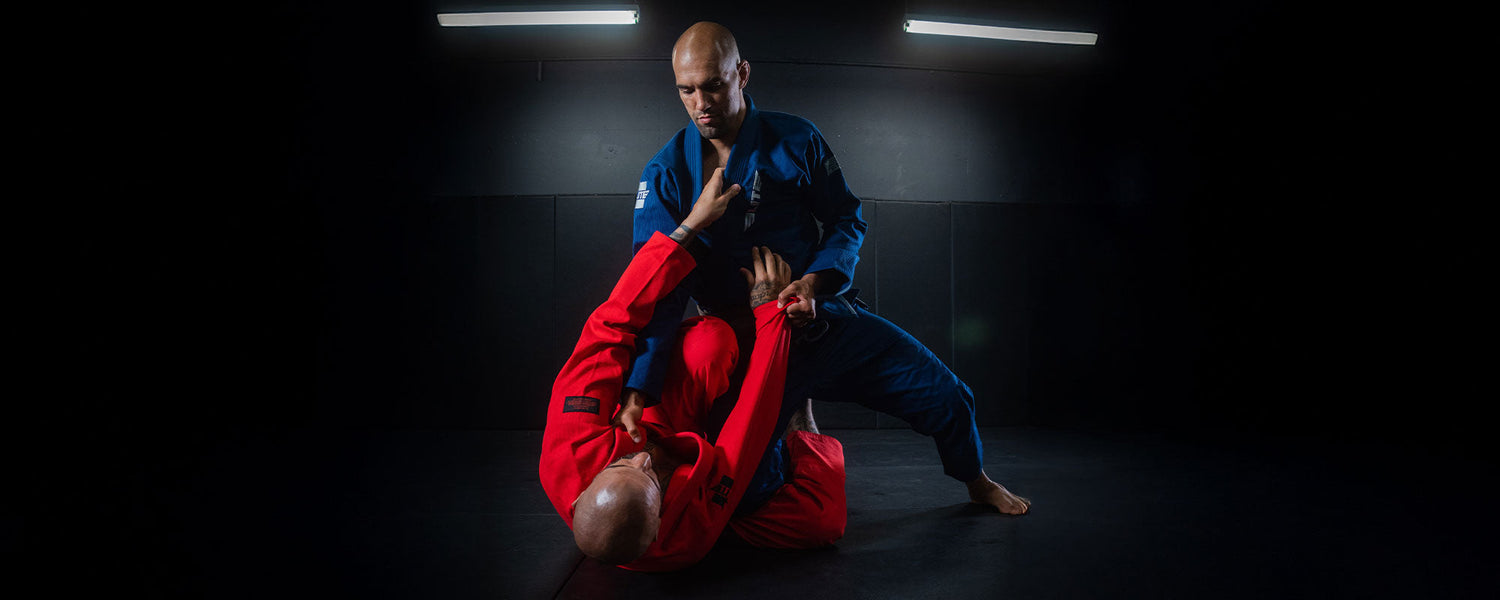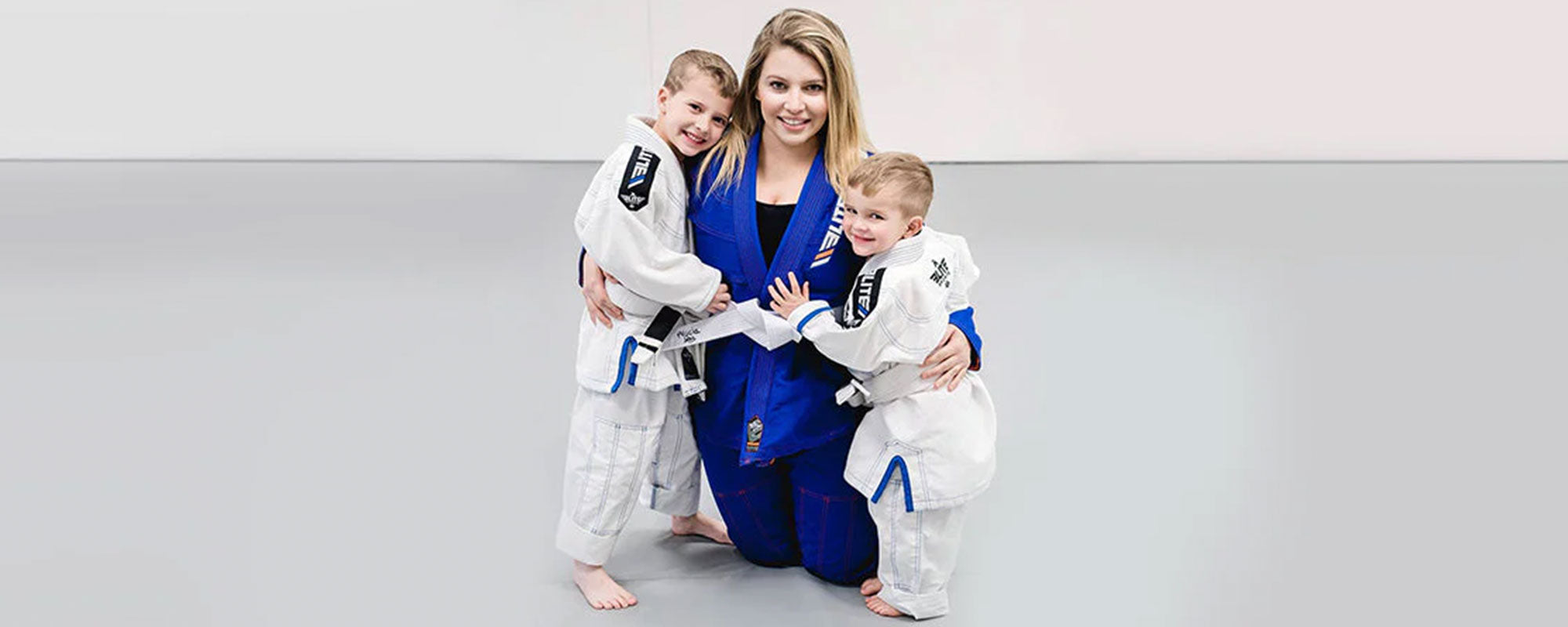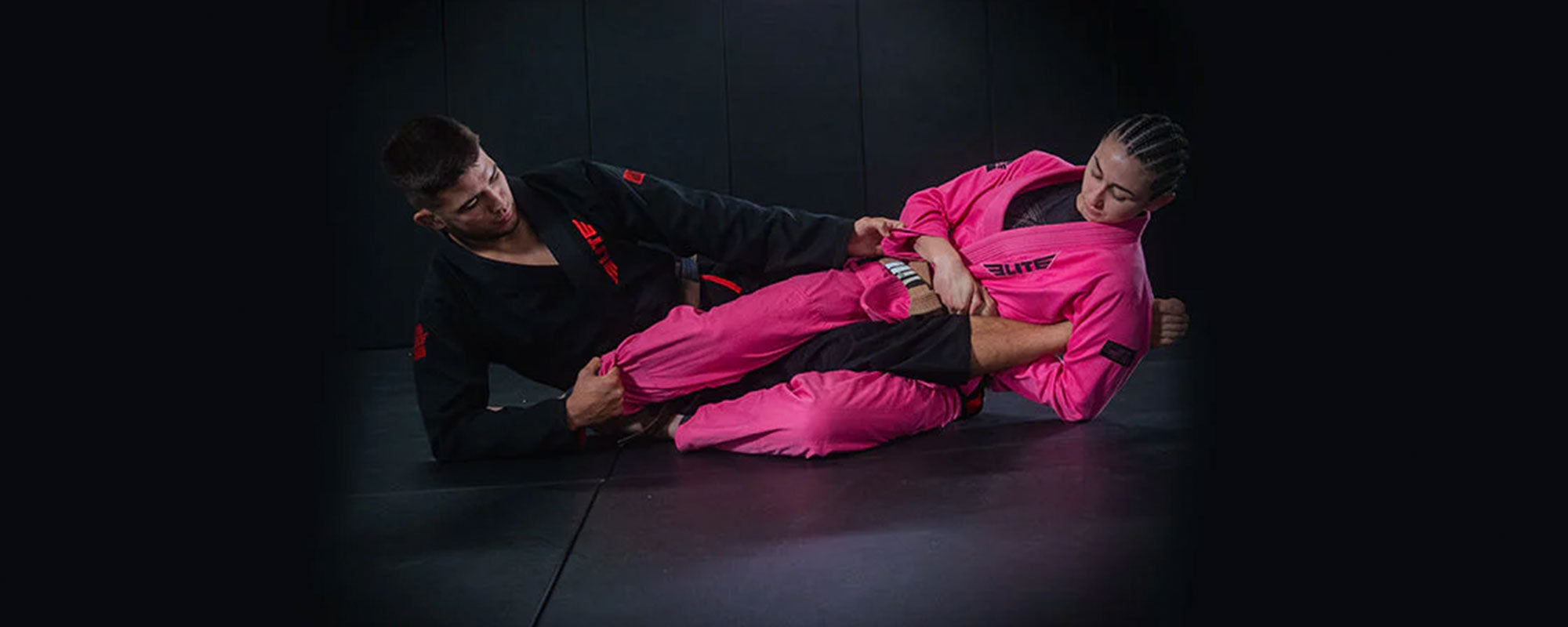Table of content
In the beginning, everything you learn in any combat sport requires extra effort to fully understand the core foundations on which the sport is built upon. Any martial art consists of learning certain skills, but practicing these skills can be tiresome and may require hard work. However, nothing can be achieved unless you put in the effort.
Brazilian Jiu-Jitsu tends to be challenging for newcomers because it incorporates a lot of grappling techniques. To better learn BJJ, beginners need to mentally prepare themselves and be willing to commit to the BJJ workout regimen.
1. What Makes Learning Brazilian Jiu-Jitsu Hard?
There can be many reasons why BJJ newcomers find it difficult to learn at the initial stage, such as:
- Unnatural and unfamiliar movements
- Insufficient body weight and stamina
- Overweight
- No available instructors
- Unrealistic expectations
- Body unable to cope with stress
- Shortness of breath
- Physical training
- Aggressive behavior
To ease into Brazilian Jiu-Jitsu training, adopt a beginner's mindset.
2. What Will I Learn in the First Few Brazilian Jiu-Jitsu Classes?
In the first few BJJ classes, you will learn to spar. Becoming familiar with the basic BJJ skills and techniques will be a little confusing. But with continued practice, you will become more fit which will improve your interest in BJJ training.
For white belts, you train with sparring partners that are far more experienced than you. The chances of injury s high but do not get discouraged. Have faith in your abilities, attend training, strength, and conditioning classes, and eat a healthier diet. Do all this and the learning process will soon become a lot easier.
3. What's the Hardest Thing About Learning Jiu-Jitsu?
The hardest part of Brazilian Jiu-Jitsu is learning how to subdue an opponent via submission.
This requires high-intensity training to be on par with the average strength of your opponent. Other factors which make jiu-jitsu more challenging are:
- Sparring with heavier opponents
- Close contact sparring
- Ground fighting is difficult and uncomfortable
BJJ training requires both physical and mental strength. Living in your comfort zone without worrying about commitments will make Brazilian Jiu-Jitsu tough for newcomers. BJJ training pulls you out of your comfort zone in favor of exploring grappling techniques. Keep rolling on the mat without tapping out frequently. The most critical skills you will learn include:
- Time management
- Submission and escapes
- Handling stress
- Fighting on your back
- Takedowns
- Maneuvering limbs
Developing a muscular and flexible body will improve joint mobility and is necessary to progress to the competitive level of Brazilian Jiu-Jitsu.
4. Why Does BJJ Have a Steep Learning Curve?
Learning Brazilian Jiu-JItsu has a steep learning curve because grappling art is deeply rooted in many philosophies. Understanding requires intense practice hours to go through the minor details. There are eight skills levels in Brazilian Jiu-Jitsu:
- White Belt
- Blue Belt
- Purple Belt
- Brown Belt
- Black Belt
- Red/Black (Coral)
- Red/White (Coral)
- Red
To be on the coral belt skill level, you need to have completed 8-10 years of serious training. The red belt is achieved by BJJ masters who have perfected grappling techniques.
The reason for the steep learning curve is that BJJ training requires a balance between mental and physical strength. Employing submissions, holds, chokeholds, and takedowns will only work if your mind and body are well coordinated. Keep in mind that it takes time to master such coordination.
5. What's the Quickest Way to Become a Jiu-Jitsu Black Belt?
Earn a black belt is not an easy task. Leaving your comfort zone and earning a blak belt requires time, commitment, and skill. Still, it takes about 6-10 years to reach the black belt level.
The following tips can help you learn Brazilian Jiu-Jitsu more efficiently:
- Consistent attendance at training classes
- Opt for private classes
- Read jiu-jitsu articles and books
- Focus on strength and conditioning exercises
- Practice basic moves frequently
- Listen to feedback and evaluate your performance
- Try to compete in smaller competitions to improve your techniques
- Improve your cardiovascular health
- Practice drills
6. Is BJJ Bad for Your Body and Hands?
Sometimes injuries can occur in BJJ training, the risk resulting in people being dissuaded from trying BJJ. BJJ training has been known to lead to chronic diseases. During grappling, the pressure applied on the neck, shoulders, and joints can result in serious health problems like arthritis, herniated discs, and constant body pains.
Preventive measures can be taken so that BJJ practitioners can avoid long-lasting or severe injuries. Take time to rest after an injury and let it heal completely before you resume training.
Opt for muscles stretching exercises, swimming, running, or other corrective exercises to safely build up muscle strength and ensure a quicker recovery.
You can change your BJJ training strategies as you grow older and more experienced. However, keep in mind that intense physical activity can negatively affect you at older ages.
According to the research article written by James F. Scoggin III at al, Assessment of injuries During Brazilian Jiu-Jitsu Competition, jiu-jitsu is statistically safer compared to other martial arts in terms of the frequency of injuries.
7. What are the Long Term Effects of BJJ Training?
A famous BJJ fighter, Rickson Gracie, at the age of 57 with eight herniated discs still practiced BJJ with the same thrill and passion as he did when he was younger. Sometimes passion for BJJ keeps people going even when their bodies start to break down.
Some fighters, even after suffering spinal injuries and chronic pains, still make time to practice BJJ once a week.
Injuries are common in Brazilian Jiu-Jitsu, but one long study revealed that zero head injuries (Chronic Traumatic Encephalopathy) were found among BJJ practitioners. However,t repeated concussions can lead to CTE. The use of Headgear is essential to reduce the risk of head injuries in BJJ fights.
The core reason for less head injuries in BJJ is that the rules prohibit striking the head and neck chokes to force a BJJ practitioner into submission.
8. Is there any Chance of Arthritis in a BJJ Fighter?
Repeated trauma to the joints and bones or sprains during BJJ fights can cause bone deformation and arthritis. BJJ can result in arthritis depending on how you devise your BJJ training strategy. Some BJJ techniques such as the armbar, Kimura, and Americana cause inflammation in the bones which eventually results in arthritis.
Arthritis can be avoided at later stages by following these tips:
- Effective nutritional plan
- Drinking enough water
- Stretching and conditioning exercises.
- Strength training
- Good quality supplements
- Tapping frequently
9. Make Your BJJ Training More Fun and Enjoyable
Your jiu-jitsu journey can be more enjoyable and fun if you put your ego aside. Avoid relying on your strength and athletic prowess, instead focus on developing a mindset that prioritizes self defense. Improve your BJJ training by simply following these simple tips:
- Learn from your mistakes. Stay focused
- Winning requires coordination between the mind and body. Don't ruin it by thinking that you learned nothing in defeat
- Try practicing new techniques during sparring
- Always be respectful to the lower ranks
- Go with the flow
10. How Long Does it Take to Learn BJJ for Self-Defense
Brazilian Jiu-Jitsu is highly recommended for self-defense for men, women and kids. When it comes to the safety of loved ones or protection from unexpected threats, BJJ training can play a vital role. Because of its reliability as a form of self-defense, BJJ gyms have gained popularity and see a large enrollment in BJJ training programs.
When attacked by an assailant, grappling helps you control your opponent’s movements by utilizing holds and forcing your attacker to the ground, rendering him/her motionless. Mastery in BJJ makes it possible to subdue an attacker quickly with minimal injury.
11. Would Brazilian Jiu-Jitsu Work in a Street Fight?
Self-defense is essential when fighting against opponents who intend to do you harm without provocation. The following are the reasons why BJJ training can be effective in a street fight:
11.1. BJJ Training Trains to Fight on the Ground
Street fights often result in fights on the ground. Takedowns and mounting are the basic skills of ground fighting. BJJ training helps you master grappling on top of mats. The grips and holds you learn in BJJ training can also be utilized in a street fight.
11.2. Stay Calm with Stimulated Nerves
Fighting on the streets may occur at any moment. As BJJ teaches you to stay calm even when your opponent has the advantage, reducing your anxiety and allowing you to think clearly. BJJ training drills teach you to come up with a proper strategy even when under duress. These skills are useful if you find yourself suddenly assaulted by a mugger and need to quickly come up with a way to subdue him/her.
11.3. BJJ Training Promotes Discipline and Respect
Not all situations you encounter have to end with a fight. BJJ training promotes discipline and respect towards others. It is a famous saying that you treat others the way you want to be treated. If you manage to come to a peaceful resolution, then you may not need to utilize your BJJ training at all. However, it is good to be skilled in BJJ just in case a situation becomes violent.
11.4. BJJ Trains to Defend Larger Opponents
The most positive aspect of BJJ training is that it trains you to fight against larger opponents. In a street fight, BJJ grapplers can quickly gain an advantage over larger opponents. You can control your opponent's movements and use his/her muscle mass against him/her in all types of situations. Coordination between the mind and body enables you to outmaneuver and immobilize any assailants in a street fight.
11.5. BJJ Teaches To Defend Against Submissions
BJJ training constantly focuses on drilling. It remains a part of the curriculum to teach students self-defense against headlocks and submissions. In a street fight, you may encounter an opponent who can grab your head and try to choke your life.
12. Conclusion
Nothing is too tough once you start practicing Brazilian Jiu-Jitsu. Enjoy the experience of learning BJJ. Once you become comfortable with using BJJ techniques, you will find yourself enjoying participating in training sessions.












Leave a comment
This site is protected by hCaptcha and the hCaptcha Privacy Policy and Terms of Service apply.